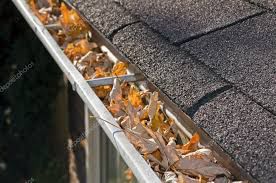- Home /
- Our chimne… /
Gutter Cleaning
Section: Gutter Cleaning
Professional gutter cleaning in Suffolk County. Prevent leaks, water damage, mold, rot, and roof problems with reliable, licensed and insured gutter maintenance.
Clogged gutters can lead to serious water damage, including leaks, roof problems, foundation issues, mold, and interior staining.
Village Chimney provides safe, thorough gutter cleaning for homes across Suffolk County — keeping your gutters working properly through every season.
🕒 How Often Should You Clean Your Gutters?
Most homes should have gutters cleaned twice a year — typically in spring and fall.
However, homes near large trees (especially pines) may require cleaning every 3 months.
Keeping gutters clean prevents:
- Water overflow
- Foundation damage
- Rotting fascia boards
- Roof leaks
- Mold growth
🍂 Best Time of Year to Clean Gutters
Professionals recommend cleaning gutters in:
- Early Spring (after winter buildup)
- Late Fall (after leaves drop)
This keeps your roof drainage system clear during heavy rain seasons on Long Island.
Homes near pine trees (common in Suffolk County) may require more frequent cleanings.
⚠️ What Happens If You Don’t Clean Your Gutters?
Blocked gutters can cause:
- Water overflowing into siding and walls
- Saturated and rotting fascia boards
- Foundation cracking
- Mold and mildew
- Interior ceiling leaks
- Ice dams in winter
- Pests nesting in gutter debris
Decomposing leaves turn into heavy sludge, making gutters sag and pull away from the home.
🧰 Can Homeowners Clean Gutters Themselves?
Technically yes — but it isn’t recommended for most homeowners.
DIY gutter cleaning requires:
- Ladder
- Work gloves
- Bucket
- Scoop or trowel
- Hose for flushing the downspouts
However, gutter cleaning is one of the most dangerous home maintenance tasks.
⚡ The 5 Most Common Dangers of Gutter Cleaning
- Unstable ladders
- Poor ladder maintenance
- Contact with electrical wiring
- Improper shoes or clothing catching on the ladder
- Vertigo, dizziness, or balance issues
Gutter cleaning injuries send thousands of homeowners to the ER each year — even from low heights.
Hiring a professional reduces risk and ensures the system is fully inspected.
💧 What Problems Can Bad Gutters Cause?
Neglected gutters can lead to:
- Water spilling into walls and ceilings
- Rotting fascia and soffits
- Mold growth inside the home
- Soil erosion around the foundation
- Basement water issues
- Roof leaks during winter ice buildup
Good gutters are essential for protecting your roof, home structure, and interior.
Related Services
- Chimney Leak & Flashing Repair
- Roof Repair
- Chimney Cleaning
- Chimney Inspections
- Service Areas – Suffolk County
📞 Schedule Gutter Cleaning in Suffolk County
Keep your home safe and prevent water damage with professional gutter cleaning.
Call: (516) 232-5326
Email: villagechimney@yahoo.com
Free estimates + senior discounts available.

